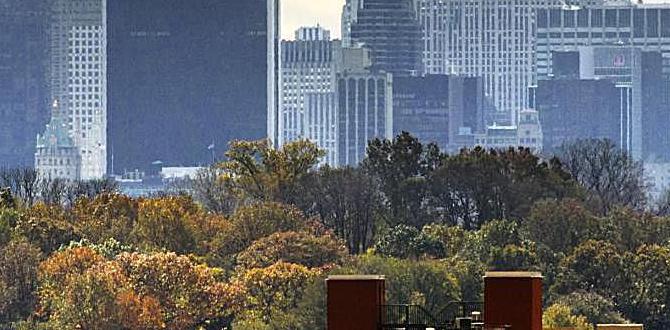Bengaluru Best Time To Visit Without Crowds: Essential Guide
Looking for the sweet spot to explore Bengaluru without the usual hustle? The best time to visit Bengaluru without crowds is typically during the shoulder seasons: September to November and February to March. These periods offer pleasant weather and fewer tourists, allowing for a more relaxed and enjoyable experience exploring the Garden City.
Bengaluru, the vibrant heart of Karnataka, draws visitors with promises of innovation, lush gardens, and delicious South Indian cuisine. But let’s be honest, navigating crowded streets and attractions can sometimes feel overwhelming, especially when you’re seeking a truly immersive experience. If you dream of exploring its tech hubs, historical sites, and green spaces without battling throngs of people, you’ve come to the right place. This guide is designed to help you pinpoint those quieter moments, ensuring your trip is as comfortable and stress-free as possible. We’ll break down the year to find those perfect pockets of peace so you can focus on enjoying everything Bengaluru has to offer. Get ready to plan your ideal, crowd-free getaway!
Understanding Bengaluru’s Climate and Tourist Flow
Bengaluru, often called the “Silicon Valley of India,” experiences a tropical savanna climate. This means it has three main seasons: summer, monsoon, and winter. Understanding these patterns is key to dodging the biggest crowds.
The city’s popularity isn’t just due to its technological prowess; it’s also a cultural and educational hub. This constant influx of visitors, from business travelers and students to vacationers, means that certain times of the year are significantly busier than others. Generally, periods coinciding with major festivals, school holidays, and the most comfortable weather see the highest tourist numbers.
There are distinct peaks and troughs in visitor numbers throughout the year. Knowing when these occur will help you plan your visit strategically. We’ll look at the factors that influence these crowds, from local holidays to the simple desire for pleasant weather, to help you find your own quiet slice of Bengaluru.
Monthly Breakdown: When to Go for Peace and Quiet
Let’s break down the year month by month to understand the best times to visit Bengaluru for a more tranquil experience. This will help you align your travel plans with periods that naturally see fewer tourists.
Peak Tourist Season & Crowds (October – January)
This is generally the most popular time to visit Bengaluru. Several factors contribute to the high number of visitors:
- Pleasant Weather: The post-monsoon months and the mild winter provide the most comfortable weather. Days are sunny and warm, while evenings are cool and pleasant, making it ideal for sightseeing.
- Festive Spirit: The period sees major festivals like Diwali and the year-end holidays. Families and friends often travel during this time, leading to increased hotel bookings and crowded attractions.
- Conferences and Events: Bengaluru’s status as a tech and business hub means it frequently hosts conferences, seminars, and corporate events, especially in the latter part of the year.
During these months, expect heavier traffic, longer queues at popular spots like Lal Bagh Botanical Garden and Tipu Sultan’s Summer Palace, and potentially higher accommodation prices. If your priority is avoiding crowds, this is the period to bypass.
Shoulder Season: The Sweet Spot (February – March & September – November)
These transitional periods offer a fantastic balance of good weather and manageable crowds. They are often considered the “shoulder seasons” and are ideal for those seeking a less frenetic experience.
- February to March: As the winter chill fades and the summer heat hasn’t fully set in, this timeframe offers a delightful climate. The city is usually less crowded than in the preceding months. It’s a great time for outdoor activities and exploring the city at a leisurely pace.
- September to November: Following the monsoon, the air is fresh, and Bengaluru is at its greenest. While it’s a popular time due to the pleasant weather, it’s generally less packed than the peak winter months. The post-festivity lull in October also offers a brief window of reduced crowds.
Visiting during these months means you can enjoy the city’s attractions with greater ease, get better deals on accommodation, and experience a more authentic local vibe without the constant rush.
Off-Peak / Monsoon Season (April – August)
The monsoon season in Bengaluru typically runs from June to August, with pre-monsoon showers often starting as early as April. This period experiences fewer tourists for several reasons:
- Rainfall: Heavy showers can disrupt travel plans and make outdoor activities less appealing. While the rain can be refreshing and makes the gardens bloom beautifully, it deters many tourists.
- Heat: April and May can be quite hot before the monsoon arrives, which also tends to reduce visitor numbers.
- School and College Schedules: Local academic calendars mean fewer families travel during these months, except for short breaks.
However, this is precisely why it can be a fantastic time for travelers seeking solitude and lower prices. Attractions are practically empty, accommodation deals are abundant, and the city takes on a different, greener charm. For those who don’t mind the occasional rain shower, this can be the most rewarding time to visit.
Key Factors Influencing Crowds in Bengaluru
Bengaluru’s visitor numbers aren’t just about the weather. Several other factors shape when it’s bustling and when it’s calm. Understanding these will help you fine-tune your travel plans even further.
Local Festivals and Holidays
India is a land of vibrant festivals, and Bengaluru is no exception. When major local holidays occur, expect increased domestic travel and, consequently, more crowds. Some prominent ones to consider:
- Diwali (Deepavali): The festival of lights, usually in October or November, is a major travel period.
- Ganesha Chaturthi: Celebrated in August or September, this festival sees significant local participation and travel.
- Kannada Rajyotsava: Celebrated on November 1st, marking the formation of Karnataka state. This leads to increased local tourism.
- Christmas and New Year: The end of December and beginning of January is a global travel peak, and Bengaluru is no exception.
It’s wise to check the specific dates for these festivals each year and plan your visit accordingly, ideally avoiding them if crowd avoidance is your primary goal.
School and College Vacations
Like anywhere else, school and university breaks significantly impact travel patterns. Families with children often plan their trips around longer vacations.
- Summer Break: Typically from April to June, this is a prime time for family travel, leading to higher numbers at tourist attractions.
- Winter Break: Around Christmas and New Year, schools and colleges are closed, contributing to the peak season.
If you’re traveling with children and looking for a relaxed experience, or if you’re an adult traveler seeking fewer family groups, avoiding these vacation periods can be beneficial.
Major Events and Conferences
Bengaluru’s role as a tech and startup hub means it frequently hosts national and international conferences, trade shows, and business events. These often attract a large number of business travelers, filling up hotels and adding to the general buzz in the city, particularly in business districts and convention centers.
While these events might not directly impact tourist attractions as much as festivals, they can contribute to overall city congestion and accommodation availability. Checking local event calendars for major tech or industrial expos can give you an extra layer of insight into crowd patterns.
Bengaluru’s Month-by-Month Crowd Forecast
To give you a clearer picture, here’s a simplified forecast of crowd levels throughout the year. Remember, these are general trends and can be influenced by specific events or unforeseen circumstances.
| Month | Typical Crowd Level | Notes |
|---|---|---|
| January | High | Post-New Year travel, pleasant weather. |
| February | Moderate | Good weather, fewer holidays, start of shoulder season. |
| March | Moderate | Pleasant weather before summer heat, good for avoiding crowds. |
| April | Moderate to High | Pre-monsoon heat, beginning of summer holidays. |
| May | High | Peak summer holidays, significant family travel. |
| June | Moderate | Monsoon begins, outdoor activities can be limited, fewer tourists. |
| July | Low | Full monsoon, lush greenery, very few tourists. |
| August | Low to Moderate | Monsoon continues, Ganesha Chaturthi might increase local travel. |
| September | Moderate | End of monsoon, pleasant weather returns, start of shoulder season. |
| October | Moderate to High | Post-monsoon beauty, leading up to Diwali. |
| November | High | Pleasant weather, Diwali, Kannada Rajyotsava. |
| December | Very High | Christmas and New Year holidays, peak tourist season. |
For the absolute best chance of a low-crowd experience with good weather, target the periods marked as “Moderate” or “Low” in the table, particularly outside of major festival weekends. February, March, September, and even the monsoon months (June-August) offer excellent opportunities.
Tips for a Crowd-Free Bengaluru Experience
Even during busier times, there are smart strategies to minimize your exposure to crowds and enhance your comfort. These tips focus on making your travel smoother, especially if you have specific needs like managing adult or child diapers for extended outings.
Prioritize Weekdays Over Weekends
This is a fundamental travel hack that applies universally, and Bengaluru is no different. Tourist attractions, popular restaurants, and even local markets will be significantly less crowded from Monday to Friday. If your schedule allows, plan your sightseeing for weekdays.
Explore Off-the-Beaten-Path Attractions
While Lal Bagh, Cubbon Park, and Tipu Sultan’s Summer Palace are must-sees, they can get very busy. Consider exploring lesser-known gems:
- National Gallery of Modern Art (NGMA): Often less crowded than larger museums, offering a peaceful art experience.
- Karnataka Chitrakala Parishath: A complex housing art galleries, it can feel quite serene, especially on weekdays.
- Visvesvaraya Industrial & Technological Museum: While popular, it has many exhibits that can disperse visitors.
- HAL Aerospace Museum: Offers a fascinating glimpse into aviation history and often sees fewer crowds than mainstream attractions.
- Ulsoor Lake: A large lake with boating facilities; while it attracts locals, it’s usually less packed than central parks.
Doing a quick search for “hidden gems Bengaluru” or “lesser-known attractions Bengaluru” can uncover many more tranquil spots.
Visit Popular Spots During Off-Peak Hours
For the iconic places you absolutely don’t want to miss, timing is everything. Aim to visit early in the morning, right when they open, or just before they close. This often means fewer people and a more relaxed atmosphere.
- For Lal Bagh or Cubbon Park, an early morning stroll (around 6-9 AM) is magical and practically crowd-free.
- Museums and palaces are often less busy immediately after opening or during weekday afternoons.
Embrace the Monsoon Charm
As mentioned, the monsoon (June-August) is Bengaluru’s off-peak season for tourism. If you can handle getting a little wet and don’t have mobility issues that are worsened by rain, this can be your best bet for a truly quiet visit.
- The city looks incredibly lush and vibrant.
- Accommodation prices tend to drop significantly.
- You’ll have popular spots almost to yourself.
Ensure you pack appropriate rain gear, waterproof bags, and perhaps comfortable, quick-drying footwear. For travelers managing adult or child diapers, having discreet, absorbent options like those from reputable brands like Depend or Prevail is crucial for staying dry and comfortable, even with occasional downpours or unexpected delays.
Plan for Comfortable Travel
Comfort is key to enjoying any travel experience, crowd-free or not. This includes planning for your personal needs.
- Transportation: Use ride-sharing apps or pre-booked taxis to navigate the city. Consider the metro for longer distances to avoid traffic, though it can be crowded during peak commute hours.
- Personal Care: If you need adult diapers or child diapers for outings, ensure you have enough high-quality, discreet products. Brands like TENA or NorthShore offer reliable absorbency and comfort for long days exploring. Packing a few extra in a separate travel bag for easy access can provide peace of mind. You can find more information on travel-friendly incontinence solutions from resources like the NursingCenter.
- Hydration and Nutrition: Carry a reusable water bottle and some snacks. This saves you time and money, and ensures you have what you need on hand.
By planning for comfort and convenience, you can make any visit to Bengaluru more enjoyable, regardless of crowd levels.
Bengaluru’s Weather: A Deeper Dive
Let’s take a closer look at Bengaluru’s weather patterns to fully appreciate why certain times are better for avoiding crowds.
Summer (March to May)
These months are characterized by rising temperatures. April is typically the hottest month. While uncomfortable for some, the heat can deter casual tourists, leading to slightly fewer crowds than in the cooler months, especially towards the end of May as pre-monsoon showers begin. If you can tolerate the heat, you might find fewer long queues.
Monsoon (June to October)
Bengaluru receives moderate to heavy rainfall during these months, with July and August being the wettest. The city becomes lush and green. While heavy downpours can disrupt plans, they also mean significantly fewer tourists. The air becomes pleasant after the rain. This is an excellent time if you don’t mind carrying an umbrella and enjoy a quieter city atmosphere. The India Meteorological Department (IMD) provides detailed climate information for the region.
Winter (November to February)
This is the most pleasant time of year weather-wise, with mild temperatures, sunny days, and cool evenings. However, as anticipated, this also coincides with the peak tourist season due to the ideal climate and festive holidays. Expect significant crowds during this period, especially in December and January.
Choosing Your Ideal Bengaluru Experience
When deciding the “best” time to visit Bengaluru without crowds, consider your personal preferences and priorities.
- For Mild Weather Lovers: Aim for February-March or September-November. While not completely empty, these periods offer the best blend of comfortable climate and manageable crowd sizes.
- For Extreme Crowd Avoider: If your primary goal is solitude, the monsoon months (June-August) are your best bet. Be prepared for rain, but enjoy the incredibly peaceful atmosphere and lower prices.
- For Budget Travelers: Off-peak seasons, especially the monsoon, often come with better deals on flights and accommodation.
- For Photography Enthusiasts: The post-monsoon greenery (September-November) offers stunning visual appeal, while the monsoon itself provides dramatic skies and a unique, refreshing ambiance.
Having the right travel accessories can make any trip more enjoyable. For instance, ensuring you have comfortable, secure solutions for personal needs, such as adult diapers or child diapers, can remove a layer of worry. Brands like Always Discreet or Huggies offer a range of products designed for comfort and leakage protection, allowing you to focus on your itinerary and make the most of your explorations, whether you’re caught in a brief shower or enjoying a long day out.
FAQ about Visiting Bengaluru Without Crowds
Here are answers to some common questions travelers have about finding a quieter time to visit Bengaluru.
When is the absolute least crowded time to visit Bengaluru?
The absolute least crowded time is generally during the peak monsoon months of July and August. While it rains frequently, you’ll find attractions nearly empty.
Is Bengaluru crowded during school holidays like April and May?
Yes, April and May are typically very crowded in Bengaluru. This is peak summer vacation time for schools and universities across India, meaning many families travel during these months.
Are weekdays significantly less crowded than weekends in Bengaluru?
Yes, weekdays are almost always less




